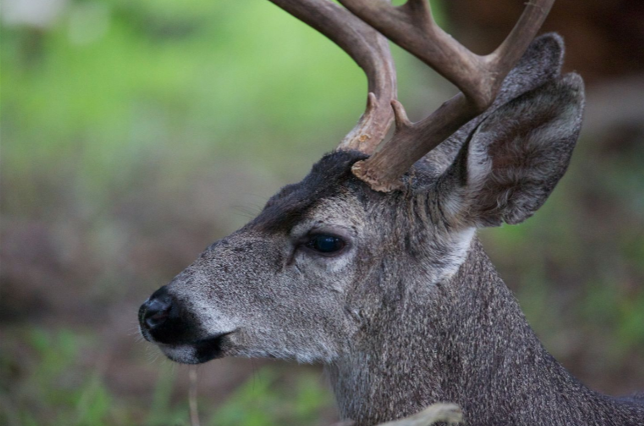
By Jim Dickson | Contributing Writer
Did you ever wonder how animals can be so successful at hunting? For one thing, they use their senses differently than most people do.
If you want to learn from nature’s master hunters you have to do as they do.
Humans do not really utilize their eyes to the fullest. Picking out a familiar face in the crowd or finding a particular car in a parking lot is about as far as it goes for most folks. When confronted with a forest most have difficulty looking through it instead of at it. Their gaze tends to stop at the beginning of it irrespective of the fact that the game lurks deep inside of it. When they do look inside they look for a deer in the openings instead of the small part of the deer that may actually be visible to the eye. The fine details of the woods are all lumped together so that the effect of any camouflage or hiding is magnified.
To begin with, you will rarely see all of the quarry at first. Perhaps it will just be the straight line of the back or an ear amongst the forest growth. This is quite easy for the beginner to miss. When you look at a stretch of woods you should note each leaf on the ground or still on the trees. Anything out of place should stand out to you.
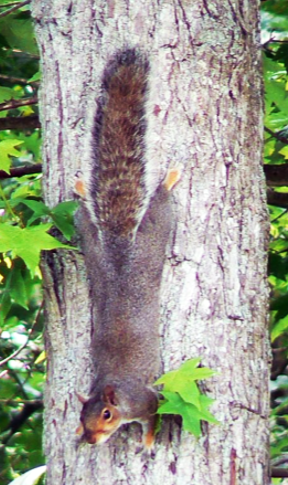
Unfortunately most folks see the great mass without noting the details. They look straight at the game without ever seeing it. The trick is to see everything and note everything in your field of view. Anything out of place warrants a closer look. Any disruption of the leaves should stand out to you like a sore thumb. A dark section may be the shadows of an opening in the dense foliage or it may be an animal. Look through it instead of at it and you should be able to see enough to make out depth if it is a natural shadow. Don’t be afraid to move or tilt your head or take a step or two to get another angle of view. Animals do this all the time. Most times you will be able to determine enough about it without resorting to binoculars. If it has eyes and a mouth it is not a shadow.
Movement should catch your eye instantly as this is the most basic and simple method of locating game. That’s why the game is going to freeze the moment it becomes aware of you forcing you to see the details in the landscape that don’t fit perfectly together.
Noticing the tiny details is also the basis of successful tracking. You won’t see footprints except around a sand bar in a creek. You will see a slight disruption in the lay of the leaves made by the deer with every step. This is very slight and easy for the uninitiated to miss but a skilled tracker can often follow it amazingly fast. You have to learn to instantly pick the fine details out of the big picture of your field of view. This is a most basic woodsman’s skill that is totally foreign to most civilized men as it is something not really used outside of the woods.
In addition to noting the small details you should always use the background to scale the size of what you are looking at. I have seen a few videos posted claiming to be black panthers in North America and it was obvious at a glance that these were simply small black house cats.
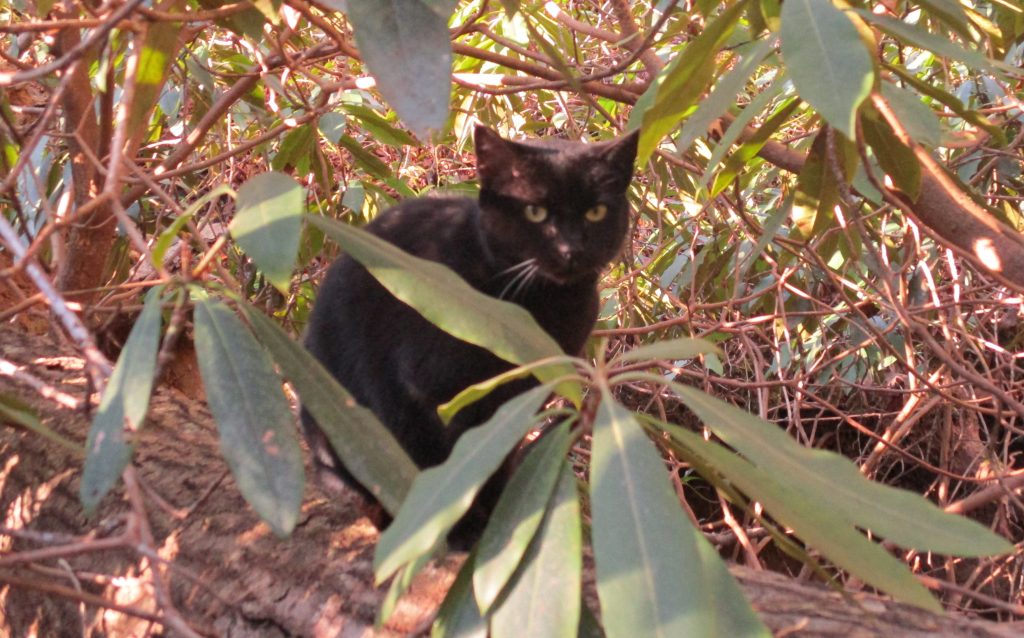
Indeed my 9-pound black female cat, Roxie, was once mistaken for a black panther about eight years ago when she was spotted by a neighbor that had moved in from the city. He soon moved back to the city. These days Roxie has given up her wild youth ways of terrorizing the population as the mythical black panther as she stays close by or inside the house now.
In civilization people tend to look straight ahead. In the wild you should constantly be swinging your eyes from left to right as far as they will go and back again so you don’t miss anything. This long swing is extremely natural and good for the eyes. It also helps you to see things at night that you could not if your gaze was fixed straight ahead because the part of the eye that sees best in the dark is around the edges and not the center. Wildlife is always striving to take in more into their field of view. Only man lets his gaze stay fixed in one direction in the woods.
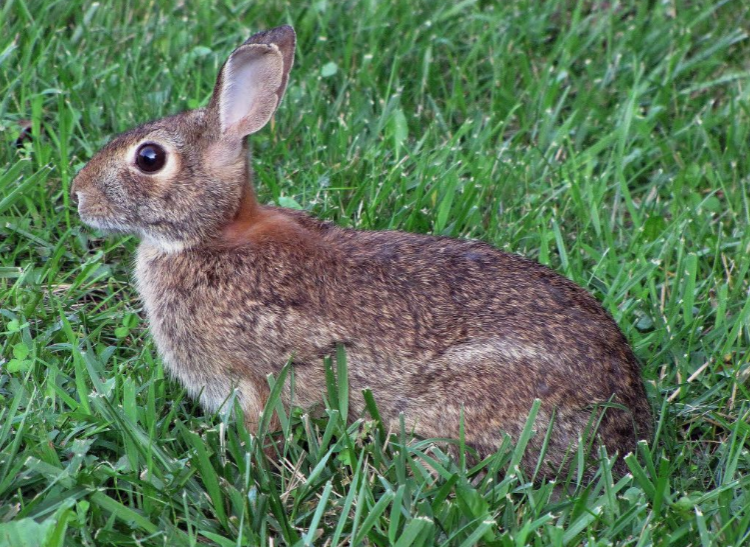
Hearing is another skill that must be learned.
Years ago when I first had my cats accompany me in the hunting blinds on my farm they would give me the dirtiest look if I turned my head to see what made a particular noise. I was supposed to know from the sound exactly what made it without moving. I soon learned and became a much better hunter.
Every animal makes a distinctive noise as it moves through the woods and you must learn to recognize them all. The measured, sure steps of the deer are quite different from the rustle a squirrel makes and nothing sounds quite like an armadillo crashing through palmetto bushes except maybe a Sherman tank. Little birds rustle the leaves on the trees and on the ground. It takes a moment to tell exactly what it is sometimes. A rabbit feeding and going about sounds nothing like a raccoon. For animals, knowing what made a particular sound is a life and death matter.
Some folks say deer move silently through the woods. They must be deaf. I have always heard deer long before I saw them in the woods. Hearing them first enabled me to be ready for them when they finally came into view. Not moving then resulted in them getting very close before finding me and then it was too late for them to get away. Knowing the difference between the sounds the various animals make when moving through the woods is crucial for the hunter. Otherwise you are more dependent on luck and luck was never a dependable way to feed yourself or your family.
I have spent many pleasant nights sleeping in the woods and the sounds of the night life are like a lullaby to me. That did not prevent me waking in plenty of time to deal with a vicious wild dog or a mean wild hog nor did dealing with those threats prevent me going back to sleep afterwards. You simply have to be aware of the sounds around you and know what makes them the same as any wild animal does.
Movement through the woods is a necessity but how you do it makes the difference between raising a red flag for your quarry and blending in with the other animal sounds. You need to sound like another animal going about its business instead of a hunter. Obviously if you sound like a bear going through the brush that is not going to work well so try to sound like a less threatening animal.
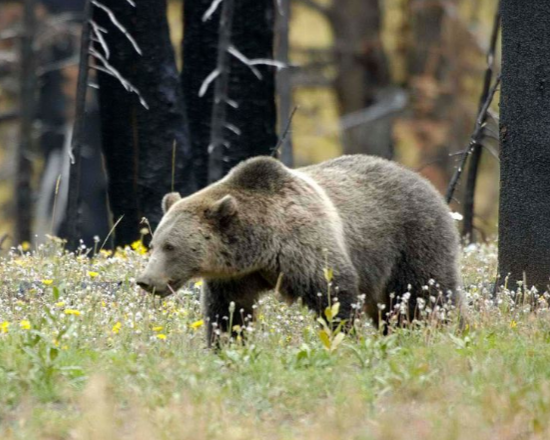
A man walking through the woods makes a very distinctive noise easily recognized by all animals. Imitating the sound of a deer moving through the woods is a bit too difficult for most but you can break up your pace to good effect. A browsing deer is like a man at a gun show. Take a few steps and then stop to look (or browse in the case of the deer).
I have known wild cats to go no more than 15 feet at a time before stopping for a very long pause to look and listen. This gives potential quarry that froze when it heard movement a chance to start moving again and reveal their location to those alert cat ears. Now you should not be discouraged if this method does not instantly produce a deer for you. In the North Georgia mountains there are at most, 15 to 20 deer per square mile. On my property there are currently only two deer whose territory overlaps my farm, down from a high of 5 a few years ago. Obviously you can easily go all day without crossing paths with a deer. That makes proper, efficient hunting techniques even more important.
It should be noted that the difficulty of moving unnoticed by the deer is great enough and the space available for hunting them is so restricted by different property owner’s boundaries that most hunters are forced to hunt from stands. A properly chosen site overlooking a regularly used deer trail is often the best choice for today’s deer hunters.
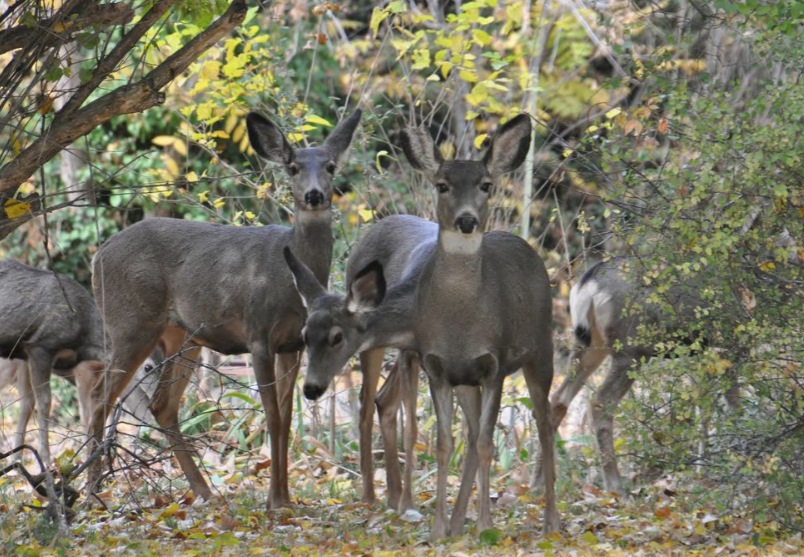
The days of pursuing one deer by tracking it all day until you get a shot at it are no more in most of this country as the hunters lack the tracking skills and the land is divided up into private property too much. Also that method led to some of the longest and toughest deer drags to get your downed game out. It was not unknown to spend all day chasing the deer then have to spend the night in the woods with the carcass once you had shot it, finally taking all of the next day to get it dragged back out. The good old days sure had their down side.
An aspect of hunting that was once accepted fact but now is rarely mentioned for fear of ridicule is telepathy among animals. This is easily observed by the fact that the casual walker often sees more game than the hunter whose every thought is shooting his game. Sensing danger is a basic instinct for all living things and this is the mechanism that runs it. With humans it is often muddled with wild imaginings and fears. Not so with animals.
If you are going to take your proper place in the woods as a predator then you need to learn to fit in like the animals around you. Observe them and see how they do things. After all, it’s not a hobby or recreation for them. It is their life’s work and they have been doing it successfully since time began.



